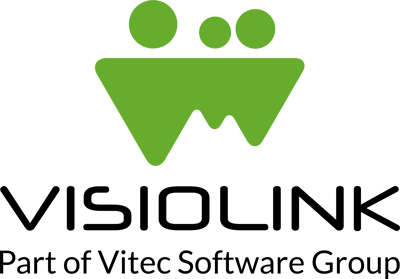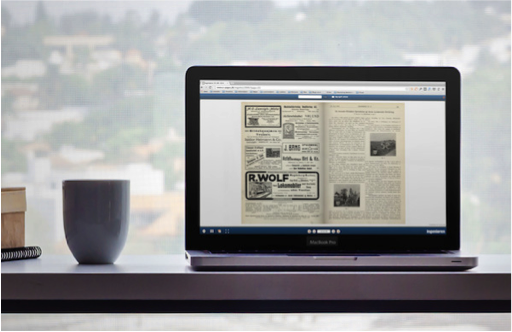Denmark's Society for Historic Technology (Hitek) kicks off the discussion of why it is important to make 200,000 pages of engineering history available online.
On a windy and rainy Tuesday, a large crowd is on hand to attend a conference organised by the Society for Historic Technology (Hitek) and held at the Danish Society of Engineers' IDA House. The topic of the day is the digitalisation of engineering's cultural legacy.

But why is it so important? Does it make a difference?
Hitek's chairman, Klaus Thiesen, opens the discussion in unique fashion:
"I have seven editions of Cooking for Friends at home, but I don't use them anymore, and that's because there's no search system. If I want to find a recipe, I have to look through all seven versions. It's hopeless! That's how people must feel when they search through the history of engineering, and that's why it must be digitalised."
Thanks to Danish software company Visiolink, some 100,000 pages of engineering history have already been published online under 'Kulturarven' ('cultural legacy') on www.ing.dk. According to CEO Jens Funder Berg, the company is working to move printed media into the future by scanning magazines and journals, and then publishing them online and making them searchable.
"By digitalising engineering periodicals, we've created a format that users can easily understand and navigate. We've also scanned the pages in full colour, so that the original look is preserved online," Berg explains.
The Visiolink CEO is confident that the digitalisation of the remaining journals and the already digitalised pages will be popular among history enthusiasts and the general public alike. And a recent study conducted by Visiolink in four Scandinavian countries has confirmed Berg's assumptions.
"General interest in historic content is huge. When one takes a look at the readership of a random Scandinavian newspaper with a searchable archive, it becomes clear that readers search for content from different periods. For example, people like being able to find content published on their birthday, from a place they've lived, or about a big event or special occasion," Berg says.
The digitalisation of the initial pages was, however, a big undertaking. Visiolink transported bound issues of the Danish magazine Ingeniøren ('The Engineer') to Switzerland, where the company Supag scanned all pages, while the text recognition work was outsourced to the Norwegian company Zissor.
The raw data takes up 13-14 MB per page, and it will remain archived in JPEG and PDF format to be digitally preserved. As such, the pages can be re-scanned if a better text recognition programme is developed in the future.
The media company behind Ingeniøren has also created a search engine that allows users to navigate through the initial 100,000 scanned pages.
The next speaker to take the floor is a representative from Ingeniøren. Editor Erik Lyngsø-Petersen has been the project's main driving force for nearly four years, and he can confirm that the technical side of the project has not been the only challenge to overcome.
Reaching an agreement with Copydan, a Danish copyright organisation, was unavoidable, as the writers still held the rights to their work, and their heirs were granted copyright control for up to 70 years following the death of the original authors. The solution to this problem came from the Danish Ministry of Culture.
"The digitalisation of the magazines would come to a halt if we had to contact all of the authors and their respective heirs. That's why all parties involved decided on a licensing agreement between Copydan and Ingeniøren media company that entailed paying DKK 400,000 (roughly EUR 58,000, ed.) for all 300,000 pages of content. I protested loudly against the amount," recounts Lyngsø-Petersen to a room full of light laughter.
The media company assumed the risk for any copyright problems with the magazine's first 100,000 pages, which were printed between 1892 and 1940 and are now available online. The cost of the licensing agreement for the remaining 200,000 pages was thus reduced to DKK 267,000 (roughly EUR 36,000), and Ingeniøren got off a bit lighter.
The arguments have been presented, and there isn't much disagreement that the remaining 200,000 pages should be digitalised. The question remains, though, how can the proposal be made reality?
Lyngsø-Petersen's final suggestion ‒ a slide that reads 'Crowdfunding?' along with the remaining amount of DKK 1.15 million (roughly EUR 200,000) and Hitek's bank account number ‒ elicits more laughter from the crowd. Without missing a beat, one participant pulls a two-kroner coin from his pocket and places it on the table in front of him while slapping his knee.
But it's not a joke, as the meeting ends with a lively discussion of how to finance the digitalisation of the final 200,000 pages.
It has yet to be determined if the path forward will be exclusively paved by crowdfunding, though it is clear that engineers will be needed to successfully complete the project.
Related content: 'Værs'go' - 100.000 sider teknologihistorie' (in Danish)
Read a few samples from Ingeniøren's archives here (in Danish)



